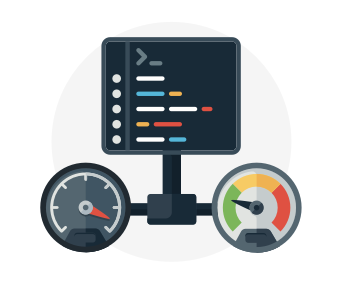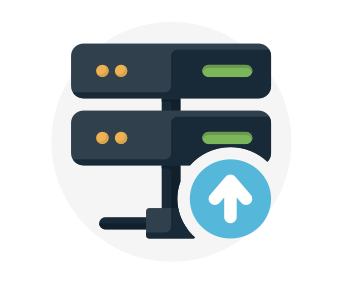What is cloud computing?
Cloud computing is renting resources, like storage space or CPU cycles, on another company’s computers. You only pay for what you use. The company providing these services is referred to as a cloud provider. Some example providers are Microsoft, Amazon, and Google.
The cloud provider is responsible for the physical hardware required to execute your work, and for keeping it up-to-date. The computing services offered tend to vary by cloud provider. However, typically they include:
- Compute power – such as Windows and Linux virtual machines
- Storage – such as object storage
- Applications – such as NoSQL or SQL database applications
- Networking – such as setting up virtual networks for your virtual machines
- Analytics – such as visualizing telemetry, and performance data
Cloud computing services
The goal of cloud computing is to make running a business easier and more efficient, whether it’s a small start-up or a large enterprise. Every business is unique and has different needs. To meet those needs, cloud computing providers offer a wide range of services.
You need to have a basic understanding of some of the services it provides. Let’s briefly discuss the two most common services that all cloud providers offer – compute power and storage.
Compute power
You’re using compute power every day, whether you know it or not. If you’re sending an email, browsing a website, or even checking the weather on your mobile device, there’s hardware doing computer processing work behind the scenes.
When you build solutions using cloud computing, you can choose how you want work to be done based on your resources and needs. For example, if you want to have more control and responsibility over maintenance, you could create a virtual machine (VM). A VM is an emulation of a computer operating system and hardware that appears to the user like a physical computer running Windows or Linux. With the cloud, you can have a VM ready within minutes, not days or weeks.

What are containers?
Containers provide a consistent, isolated execution environment for applications. The open-source project, Docker, is one of the leading platforms for managing containers. Docker containers provide an efficient, lightweight approach to application deployment because they allow different components of the application to be deployed independently into different containers. Multiple containers can reside on a single machine, and containers can be moved between machines. The portability of the container makes it easy for applications to be deployed in multiple environments, either on-premises or in the cloud, often with no changes to the application.
What is serverless computing?
Serverless computing lets you run application code without creating, configuring, or maintaining a server. Serverless computing enables you to focus solely on how your application behaves. It’s ideal for automation tasks. For example, you can build a serverless process that automatically sends an email confirmation after a customer makes an online purchase.
Storage
Most devices read and/or write data. Here are some examples:
- Retrieving weather information
- Taking a picture
- Sending an email
- Leaving a voicemail
In all of these cases, data is either read (like the weather) or written (like taking a picture). The type of data is different in each of these cases.

Cloud providers typically offer services that can handle all of these types of data. For example, if you wanted to store text, you could use a file on disk or you could take a more structured approach like using a relational database.
Summary
Every business has different needs and requirements. Cloud computing is flexible and cost-efficient, which can be beneficial to every business, whether it’s a small start-up or a large enterprise.